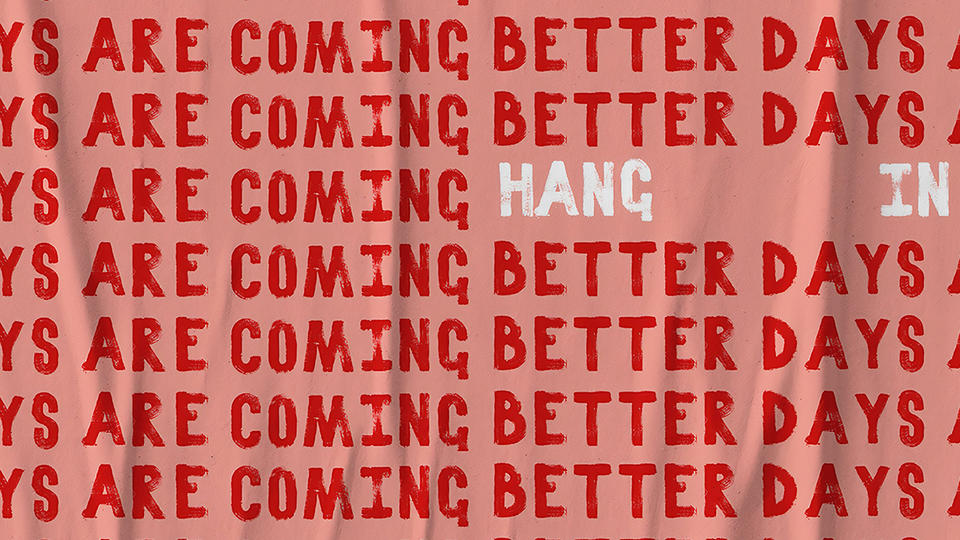Stay In Your Lane
Why most companies should avoid taking political stances.


By Utpal Dholakia
Why Most Companies Should Avoid Taking Political Stances
This article originally appeared on Psychology Today.
More companies are taking political stances these days. During the past week alone, Dick’s Sporting Goods and Walmart said they would stop selling guns to anyone under 21. Dick’s went even further and stopped selling assault-style rifles and high capacity firearms. Over a dozen other companies, including Delta Airlines, United, Hertz, and MetLife announced various actions such as no longer offering discounts to NRA members.
Defining a political stance
For this post, I define a company’s political stance as having two properties. First, a political stance is a visible business decision that shows support for the policies and views of one political party over another. For instance, when a retailer eliminates gun SKUs or an airline cuts off NRA member discounts, these companies are aligning with Democratic views. Alternatively, when Papa John’s Pizza denounced NFL player protests a few months ago, it allied with Republicans. The respective companies were concurrently distancing themselves from the opposing political party in a public way.
The second property of a company’s political stance is that the decision’s timing is fueled by some external event and is unrelated to a business outcome. For instance, stopping sales of assault guns because of poor sales performance or low profitability is a normal business decision, but doing this soon after a mass shooting is taking a political stance.
Many experts have noted the increasing incidence of political stance-taking by companies. Some of this is driven by pressure from within. In one study of senior executives at large corporations around the world, almost half wanted their company’s leaders to speak out on hot-button issues like climate change, gun control, and immigration. A second reason is that some companies’ CEOs are naturally outspoken and weight their own political affiliation heavily in their business decision making.
Despite the potential for positive buzz and support from a section of customers and the general public, there are two important reasons why I think it’s a bad idea for companies, particularly large ones, to take political stances.
Political stances usually alienate a significant fraction of the company’s customers, employees, investors, and other constituents.
Every business operates in an environment with many moving parts that have complicated relationships among them. For lasting success, everything has to work more or less smoothly. For example, when employees are satisfied with their work environment, they feel empowered and fulfilled, and go on to deliver high-quality customer service, which in turn, delights customers. When investors view the company in a positive light, it creates a halo effect that makes it easier to handle difficult economic conditions.
However, when a large company takes a political stance, it alienates some significant number of these constituents and throws things out of kilter. This is because every large company, whether it is Dick’s Sporting Goods, United Airlines, or Papa John’s Pizza, is sure to have constituents across the political spectrum. Taking a stance that favors one partisan group upsets and alienates customers, employees, and investors from the other group. The morale of employees plunges leading to lower motivation and effort. Some employees may even leave. Customers will simply defect and find some other seller if they feel unwelcome. One recent study found that when offered an opportunity to purchase a deeply discounted Amazon gift card, consumers were more than twice as likely to buy when their political affiliation matched the seller.
Political stances take the attention of managers away from the company’s core business objectives.
The primary objectives of a business are to deliver high-quality products and services at a fair price to customers, provide an inclusive work environment with fair pay to employees, and deliver strong financial performance to investors. Taking a political stance usually does not fit well with any of these goals. What’s even more problematic, it distracts managers at all levels in the company from the activities that are crucial to achieving these goals because it occupies their time and attention. Just imagine how much turmoil must have gone on inside Dick’s Sporting Goods this past week over a policy change that contributed relatively little to their sales or bottom line. (The company sold assault-style guns only at 35 of its 750 stores, and the firearm product category sales had been declining long before this stance.)
There is a third pragmatic reason for avoiding political stances, which is that such decisions are unlikely to have a significant impact on the core issue. For instance, even if Walmart and Dick’s Sporting Goods stop selling assault-style rifles, there are plenty of other sellers who will continue to do so. If Papa John’s lashes out against NFL player protests, consumers will simply buy another of the dozens of available pizza brands. The stance-taking company is ceding ground to its competitors that decided not to take a political stance, without affecting any significant change.
Conclusion
I will conclude by pointing out one caveat. My discussion has focused on large companies that serve diverse constituents. For a small business with few homogeneous employees and a narrowly defined customer segment, this discussion would be reversed. Such companies should be the ones that wade deeply into political issues and take stances that align with their employees' and customers’ political views.
Utpal Dholakia is the George R. Brown Professor of Marketing at Jones Graduate School of Business at Rice University.
Never Miss A Story
Keep Exploring
Fortune Hunters
Does inside information affect a company’s stock and bond prices?


Based on research by Kevin Crotty and Kerry Back
Does Inside Information Affect A Company’s Stock And Bond Prices?
- Stock trades affect bond prices and bond trades affect stock prices.
- Relevant inside information on the value or riskiness of a firm’s assets may shed extra light on the value of the firm’s stock and bonds.
- The type of inside information an investor has will determine whether stock prices go up or down when bond trading is heavy.
Large firms finance their operations both by selling shares to investors and by issuing debt in the corporate bond market. The price of these shares and bonds, of course, is shaped in large part by public knowledge about the company. But there are other factors as well, particularly less-public knowledge such as private information about a company’s risk level or value.
What’s the impact of such inside details? That, say Rice Business Professors Kerry Back and Kevin Crotty, depends on just what sort of private information investors may have.
In a recent paper, Back and Crotty took a close look at the possible effects of private information and found that the type of inside information that certain investors have determines if the price of a given stock will rise or fall when there’s heavy buying or selling in the stock and bond market. By studying the content of buy or sell orders, the researchers were able to discern whether investors tended to have inside information about the value of assets or the riskiness of assets.
When some investors know more than the market about the expected value of a company’s operations, heavy buying in stocks will predict higher prices in the bond market, while heavy buying in bonds corresponds to higher prices for the firm’s stock. But when some investors have private information about the riskiness of a company’s operations, the reverse happens: Heavy buying in stocks will predict lower prices in the bond market, and heavy buying in bonds will predict lower prices in the firm’s stock.
Back and Crotty used a sample of daily trades from 221 firms to estimate how prices in one market, such as bonds, responded to trading activity in the other main market – that is, stocks – and vice versa. Their sample skewed toward large firms, with a median stock market capitalization of $14 billion and median outstanding debt of about $5 billion. Based on the relationships in the data between trading activity in one market and prices in the other, the researchers concluded that private information about a firm’s operations is primarily about its expected value, rather than its riskiness.
What does this mean to the ambitious corporation looking to raise money? Investors demand a return for buying both corporate bonds and stocks. Back and Crotty’s research shows that, in addition to public information, both debt and equity returns are shaped by private information that some investors have about the expected value of the firm’s operations. Their new data confirm that a particular type of inside information pushes stock and bond prices in a predictable way.
And what about those market observers who don’t have a $14 billion company to run? For them, these findings shed new light on how information gets into prices in the stock and bond markets. Not surprisingly, some investors know more than others, and their “inside” information eventually is reflected in prices.
Kerry Back is a J. Howard Creekmore professor of finance and professor of economics at the Jones Graduate School of Business at Rice University.
Kevin Crotty is an associate professor of finance at the Jones Graduate School of Business at Rice University.
To learn more, please see: Back, K., & Crotty, K. (2015). The informational role of stock and bond volume. The Review of Financial Studies, 5(1), 1381-1427.
Never Miss A Story
You May Also Like
Keep Exploring
Two-Way Street
What’s learned, and what’s lost, when foreign investors enter a market?


Based on research by Yan Anthea Zhang and Haiyang Li
What’s Learned, And What’s Lost, When Foreign Investors Enter A Market?
- The entry of high quality foreign firms into developing markets creates enormous opportunities for local firms.
- At the same time, these firms must learn quickly and efficiently.
- The ability of these firms to take advantage of the presence of foreign companies increases as the barriers to imitation lower.
Foreign investors want shiny new factories, low wages and a pipeline to new markets. Their government hosts want local businesses to improve through learning from outsiders. What could be simpler?
A lot. Technology spillover to locals from foreign direct investment is mostly the result of slow, often unplanned contact. Because foreign companies try to keep their competitive advantages to themselves, local companies have to overcome various barriers for learning to get what they need to survive.
To better understand how foreign direct investment affects local firms, Rice Business Professors Yan Anthea Zhang and Haiyang Li joined colleague Yu Li of China’s University of International Business and Economies in analyzing hundreds of thousands of local and foreign companies operating in China.
Scouring the gigantic annual Industrial Survey Database (1998–2007) from China’s National Bureau of Statistics, the researchers looked at 301,667 domestic firms in 511 four-digit Standard Industrial Classification code manufacturing industries (accounting for more than 93 percent of manufacturing industries in China). Then they studied data from nearly 65,000 foreign firms operating in these industries in China during the same time period.
What they found was a clear positive relationship between the length of foreign investments’ presence in an industry and the productivity of local firms in the same industry — suggesting that local firms become more efficient by learning and competing with foreign entrants over time.
This spillover effect, of course, is not specific to China. In the 1980s, India’s Bajaj Auto, which makes motor scooters, faced the daunting task of competing with Japanese giant Honda. At the start, the Honda scooters were more efficient. But as time passed, Bajaj learned a thing or two. First, they realized that the technology for developing motor scooters was relatively stable, which limited the cost of building a quality competitive product. Second, Bajaj learned to take better advantage of its strengths, including easy-to-access spare parts and ubiquitous maintenance facilities. In the end, Honda’s entry into the market made Bajaj more competitive.
The arrival of foreign firms into developing markets usually brings some opportunity for host industries.
True, the newcomers typically drive some local firms (typically the less efficient ones) out of businesses. But those that survive tend to grow stronger and more sophisticated. When KFC came to Kenya, for example, the implications were enormous. The company was seeking to expand its markets not just in Kenya but throughout Africa, and brought with it the organizational and technological savvy to do so.
Exposed to new products and systems, domestic companies feel compelled to imitate them. If they want to survive, they must proactively dig for information about the competition and expertly back-engineer their foreign rivals’ products to measure up.
Local firms learn faster when foreign firms rely on tangible assets more than intangible ones. The secret ingredient to Coca-Cola, for example, is harder to reproduce than a piece of equipment or a production line process. Foreign companies whose competences are hard for outsiders to observe and understand can better protect their competitive advantage from local imitation.
The local firms’ survival also hinges on how many foreign firms pour in, and how quickly. When foreign firms come in gradually, the researchers found, local businesses stand a much better chance of surviving. But when outside firms arrive en masse, local businesses can be overwhelmed trying to spot, interpret and emulate their practices.
While domestic firms can learn from foreign entrants to increase their productivity and improve their chances of survival, the impact of foreign firms dwindles with time. Curiously, that’s not all good for the locals: As time passes, the useful technology that foreign rivals offer diminishes too.
Thoughtful managers in both foreign and domestic firms can use these findings, Zhang, Li and Li note. Foreign firms need to calculate when they are vulnerable to local imitation. Domestic companies should be aware that the learning opportunity brought by foreign entrants is arduous and only pays off under specific circumstances.
Zhang, Li and Li’s look at the contretemps between local and foreign firms reveals just how nuanced the international investment process really is — both for the powerful foreign direct investors who want to stay competitive, and the local firms who plan to emulate, and eventually surpass, their foreign rivals.
Yan Anthea Zhang is Fayez Sarofim Vanguard Professor of Management in Strategic Management at Jones Graduate School of Business at Rice University.
Haiyang Li is a Professor of Strategic Management at the Jones Graduate School of Business at Rice University.
To learn more, please see: Zhang, Y., Li, Y., & Li, H. (2014). FDI spillovers over time in an emerging market: The roles of entry tenure and barriers to imitation. Academy of Management Journal, 57(3), 698–722.
Never Miss A Story
You May Also Like
Keep Exploring
Language Police
What happens when we censor our own words — and the ideas they represent?


By Jennifer Latson
What happens when we censor our own words — and the ideas they represent?
You don’t have to ban words to get people to stop using them.
That became evident in December, when reports that White House officials had banned seven words at the Centers for Disease Control and Prevention (including “diversity” and “science-based”) turned out to be a red herring. The words had, in fact, been changed in official documents by the CDC’s own employees to eliminate triggers that might make their projects the target of budget cuts. By replacing politically-charged terms with euphemisms and abstractions, the public health workers revealed their best guesses — and worst fears — about what would rub the administration the wrong way.
It’s not the first time vague wording has made its way into a government document, but as an indicator of a larger trend, it’s troubling. Recent surveys show that self-censorship is on the rise in the U.S. — and that’s a hallmark of institutionalized fear, according to Corey Robin, a professor of political science at Brooklyn College and the author of Fear: The History of a Political Idea. We normally associate fear-driven self-censorship with totalitarianism, but it can crop up in democracies as well, Robin explains.
Brutal regimes, of course, plant the seeds of fear especially effectively. Robin quotes a psychoanalyst who lived through Uruguay’s military dictatorship in the 1970s, saying, “The process of self-censorship was incredibly insidious: It wasn’t just that you stopped talking about certain things with other people — you stopped thinking them yourself. Your internal dialogue just dried up.”
This is the danger of restricting speech: When people avoid discussing taboo topics, ideas themselves begin to disappear.
Jonathan Zimmerman, a professor of education and history at the University of Pennsylvania and the author of The Case for Contention: Teaching Controversial Issues in American Schools, says there’s a crucial difference between curbing derogatory language and avoiding controversial topics altogether.
These days, he points out, racial slurs have all but disappeared from college campuses — and it’s no loss that these words have become unofficially banned. But the fact that you rarely hear an open debate about affirmative action is problematic. He was surprised when a recent poll showed that 40 percent of professors oppose the policy — a stunning revelation because he’d never heard any of his colleagues voice that opinion.
“Obviously it’s because a lot of us are self-censoring,” he said. “And that can’t be good for the university or for affirmative action.”
Zimmerman’s concerns were further stoked last April, when Harvard University rescinded admissions offers to 10 students who had posted racist and obscene messages on social media.
“Their behavior was unacceptable, and there should have been consequences,” but revoking their admission was not the best response, Zimmerman argued in an op-ed for the Chronicle of Higher Education.
“My fear was that the penalty would not inhibit the stuff these kids were saying, which should be inhibited, but would inhibit other forms of open public discourse,” he said. “The best reply to bad speech is always more speech, not less.”
Surveys confirm that college students are more reluctant than ever to voice an unpopular opinion, but self-censorship isn’t just an issue on college campuses. The rest of us are increasingly wary, too. A 2017 report by The Cato Institute found that a majority of Americans — 58 percent — were afraid to share their political beliefs.
Why? It’s partly that political debate has become increasingly polarized. A 2014 study by the Pew Research Center concluded that “Republicans and Democrats are more divided along ideological lines – and partisan antipathy is deeper and more extensive – than at any point in the last two decades” — and that was before the 2016 election.
But it’s also true that frank public discussion has become increasingly fraught in the digital age, when social media posts open you up to virulent — and viral — public shaming. The consequences of online shaming are very real, as Jon Ronson writes in So You've Been Publicly Shamed: people have lost jobs, reputations and relationships over things they’ve said on social media. Ronson argues that these consequences are wildly disproportionate to the crime of offensive speech.
So what if you’re a Google employee who believes women are biologically ill-suited for roles in tech and leadership (partly because, as Google computer engineer James Damore wrote in a memo last summer, “women are on average more prone to anxiety”)? Should you be fired for voicing those beliefs?
Most Americans think not, according to the Cato Institute survey. And while the Google case was a reminder that the Constitution doesn’t specifically protect free speech in the workplace, there are arguments to be made for allowing employees to voice unpopular views.
For one thing, stifling free expression can also stifle innovation, according to research by Jing Zhou and Jennifer George, professors at Rice University’s Jones Graduate School of Business. They found, in a 2001 study, that disgruntled employees came up with some of the most creative solutions to workplace problems — but only “if they were reasonably confident that voicing their dissatisfaction could bring about needed change,” Zhou said.
“Leaders play a key role in boosting this confidence,” she added. “They should seek, encourage, and listen to employees’ input, even when (perhaps especially when) those ideas are different from the views the leaders hold.”
In other words, leaders can make it known that dissenting opinions are allowed by, well, allowing them — and by encouraging candid debate without penalizing unorthodox opinions.
Zimmerman practices this approach in the classroom. Although some of Donald Trump’s public comments make his blood boil, he doesn’t punish any of his students for agreeing with the president’s political ideas.
“What I say in my classes is that anyone can agree with Trump on anything — immigration, China, anything — you just can’t act like him,” he said. “You can’t vilify anyone who disagrees with you as beneath humanity. You can’t call women ‘pigs.’ You can say whatever you want to about Title IX and how it affects women, but you can’t call them pigs.”
“The most important thing we can do is to try to actually practice free speech, which is different from saying you support it,” says Zimmerman. “Otherwise it’s just an abstraction.”
Jennifer Latson is a staff writer and editor at Rice University’s Jones Graduate School of Business and the author of The Boy Who Loved Too Much.
Never Miss A Story
Keep Exploring
Power To The People
Advice for employee advocates about changing the world.
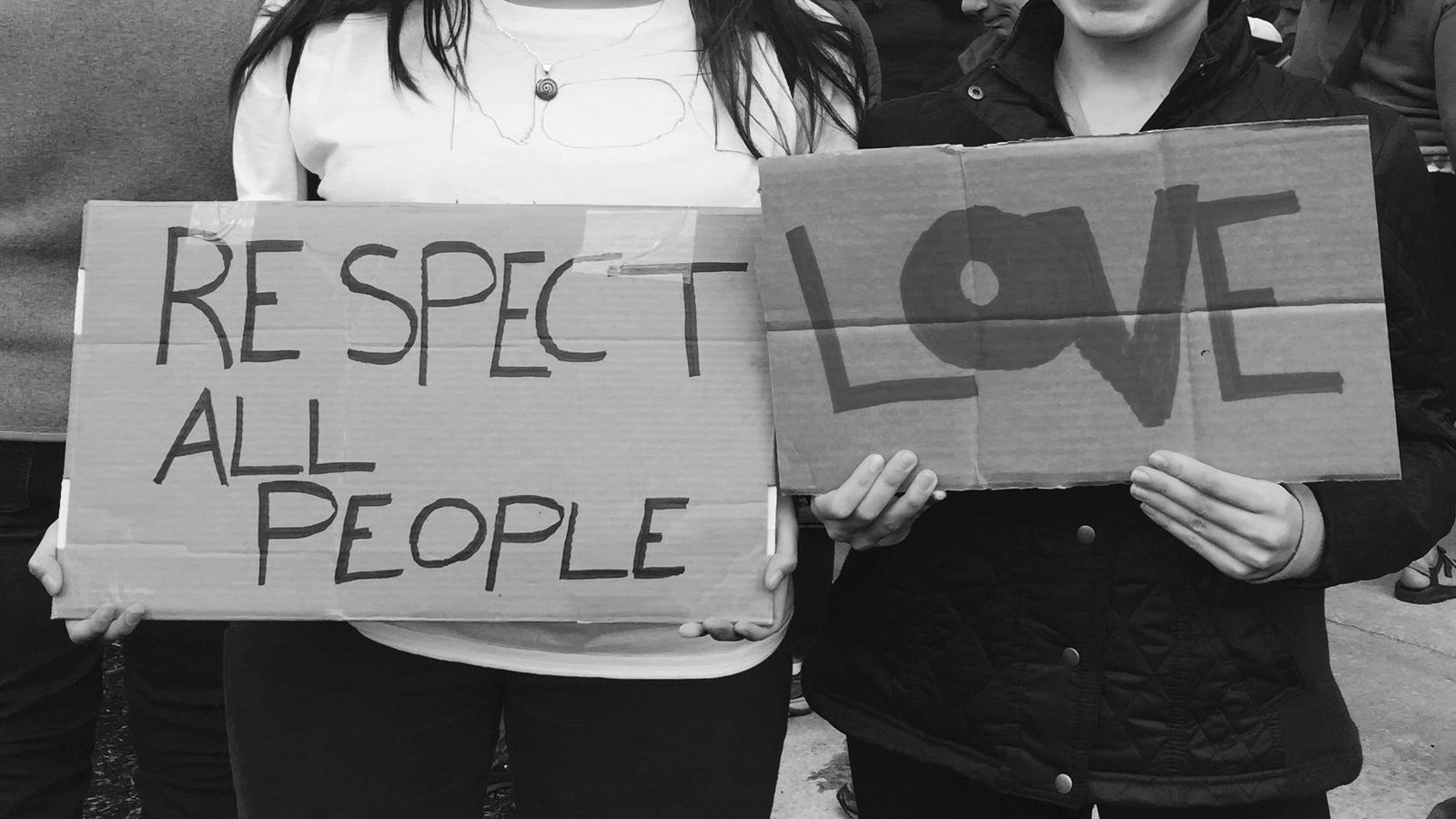
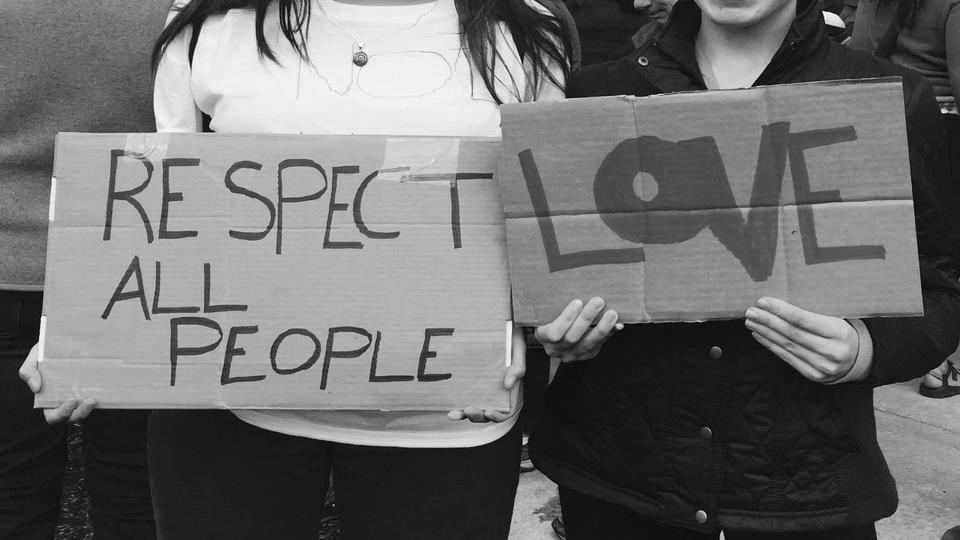
Based on research by Scott Sonenshein, Katherine A. Decelles and Jane E. Dutton
What Makes A Corporation Wade Into Social Justice Issues?
- More and more U.S. firms back social equality movements as a way to attract top workers.
- But it’s still hard to be an activist from the workplace — especially on the issue of climate change.
- Assessing personal strengths and weaknesses helps employees (and potential employees) be better advocates for their causes.
A few decades ago, it would have been unheard of to think of corporate America as a leader in social justice. Wasn’t the bottom line the only line that mattered?
Recently, however, several U.S. corporations have entered the fray on the side of the less powerful. For example, Dow Chemical and other firms were among those lobbying against the North Carolina bill limiting public restroom access for transgender people. In Georgia, the Disney Corporation helped persuade the governor to veto a similar bill. Even corporations that are controversial on one cause, such as Monsanto, have taken stands on other issues, such as what they see as discriminatory legislation.
There’s a reason some companies are looking out for the underdog: Firms that operate in states with discriminatory laws are struggling to recruit the best and the brightest. Talented employees, these companies know, are often motivated by social and environmental causes from LGBT rights to fighting climate change. In other words, it’s workers themselves who are pushing corporate America toward social activism.
How can they best harness this power?
In a recent paper, Scott Sonenshein, a professor at Rice Business, Katherine DeCelles of the University of Toronto and Jane Dutton of the University of Michigan explored how employee activists could maximize their often taxing efforts.
Some causes, the scholars found, are more daunting than others. Advocacy for LBGT rights, for instance, can be difficult, but at least the issues are clear-cut. The Supreme Court can make a ruling, and voila: same-sex marriage is legal in Texas.
Battling climate change, however, is trickier. First, as one research subject put it, the issue itself “is probably the most difficult and complicated challenge humanity has ever faced.” Second, at the same time that green advocates are wrapping their own minds around the problem, they must deal with others, including coworkers, who don’t share their passion. Some simply don’t care. “I’m going to make my couple hundred thousand dollars creating money for rich people,” a study participant imagined a coworker declaring. Others, of course, deny climate change is real.
Environmental advocates also face internal doubts. Do they have the wherewithal, some quietly wonder, to tackle climate change’s complexities? Even for individuals, living green can be pricey and inconvenient. Depending on the industry, convincing a company to go green can seem impossible.
Sonenshein and his coauthors propose ways for green activists to take heart. They can start by assessing their “self assets” – all the personal attributes an individual can call on for strength. A person’s values, knowledge and experience can all be assets. So can the ability to adapt. Over time, for example, one study subject learned to adjust the way she talked about climate change to match a given audience, even within the same workplace. The more you can put environmental issues into coworkers’ own language, she told the researchers, “the more you can get them to see the benefits to them” of effecting change.
Curiously, the authors found that practical constraints actually strengthened activists’ ability to promote their causes at work. Self-doubt, for example, often brought out activists’ resolve to improve their technique and turn weakness into strength – with an important caveat. They also needed to recognize their self-assets. That was especially true for those who could look at their overall lives and see that a perceived failure at work could be balanced by success in the same issue at home. If you can’t get recycling going in the office, in other words, don’t give up. Recycle more in your neighborhood.
“Know thyself” is one of our oldest injunctions. By looking at themselves in a multifaceted way, and acknowledging strengths alongside weaknesses, employee activists can appreciate their triumphs where they find them. Just as important, they can muster the courage to fight another day.
Scott Sonenshein is the Henry Gardiner Symonds Professor of Management at Jones Graduate School of Business at Rice University.
To learn more, please see: Sonenshein, Scott, DeCelles, Katherine A., & Dutton, Jane E. (2014). It’s not easy being green. The role of self-evaluations in explaining support of environmental issues. Academy of Management Journal, 57(1), 7-37.
Note: This article was originally published Oct 27, 2016.
Never Miss A Story
You May Also Like
Keep Exploring
Sorry Not Sorry
What does it take to make a decent apology?


By Claudia Feldman
What Does It Take To Make A Decent Apology?
Think of some of the apologies we’ve heard in this year:
- Actress Roseanne Barr blaming Ambien for a racist tweet.
- Film producer and accused rapist Harvey Weinstein attempting to dismiss decades of sexual misconduct by quoting actress Meryl Streep, who once described their working relationship as “respectful.”
- Celebrity chef Mario Batali offering a seemingly sincere written apology after multiple allegations of sexual harassment and assault, then touting a recipe for pizza dough cinnamon rolls.
Men — or women — who will not take responsibility for their awful behavior are really nothing new. What is different today is the #MeToo movement, an outpouring of women sharing their own stories of abuse, and the omni-presence of social media. Stories about misconduct of all sorts — and the insincere apologies that tend to follow — go around the world in the length of time it takes to hit the “send” button.
That may explain why primers on apologies, for individuals and business leaders, also are trending now. Apologies can’t heal all wounds; sometimes they make things worse, says Anastasiya Zavyalova, an assistant professor of strategic management at Rice Business.
But sometimes a serious apology can break a fall.
Roy Lewicki, professor emeritus of management and human resources at The Ohio State University’s Fisher College of Business, started focusing on apologies in the wake of JetBlue’s detailed explanation of a major equipment shutdown in New York, Tiger Woods’ mea culpa for extra-marital affairs, and British Petroleum’s attempt to atone after the deadly Deepwater Horizon oil spill.
As such clippings piled up on his desk, Lewicki saw links between his extensive research on trust and the importance of trust repair. Did apologies help mend torn business relationships, he wondered? What did an effective apology look like?
After several years of study, Lewicki found six key components to a good “sorry," and the more of those components included in the apology, the better. They were: an expression of regret (I’m sorry), a specific explanation of what went wrong (this is why I’m apologizing), an acknowledgement of responsibility (it’s my fault), a declaration of repentance (it will never happen again), an offer of repair (here’s how I plan to fix this) and a request for forgiveness.
Lewicki’s research also showed that the six elements are not equal in importance. What matters most are the acknowledgement of responsibility, declaration of repentance and offer of repair.
A different kind of apology, between individuals, lies at the core of psychologist Harriet Lerner's recent book, “Why Won’t You Apologize?” She recommends a message that is short, sincere and designed to open lines of communication. Here’s an example: “The comment I made was offensive (and name it). It was insensitive, uncalled for and it won’t happen again.”
But, as Lerner says, it’s one thing to forget to return a friend’s Tupperware and another to sleep with her husband. In cases of more egregious behavior, Lerner says, “I’m sorry” is a good first step in a long distance run that requires the offender to drop his or her defenses and simply listen.
“There is no greater gift, or one more difficult to offer, than heartfelt listening to that kind of pain, especially when the other person is accusing us of causing it,” Lerner says.
***
Oberlin College psychology professor Cindy McPherson Frantz researched a subset of “I’m sorry” etiquette after a student vented about a boyfriend’s apology. It was too early, the young woman said; she wasn’t ready to hear it.
At first that sounded ridiculous. Then it wasn’t.
“Yes, there is such a thing as a too-early apology," Franz says. "It’s usually in the interest of the other person to say ‘I’m sorry’ as quickly as possible, but the victim really needs to feel heard and understood. The perpetrator needs to get what he did wrong and be committed to not doing it again.”
Other common missteps include repeated apologies that don’t ring true and statements like, “I’m sorry if I offended you” or “I’m sorry if you feel that way.”
“Sorry I offended” means the perpetrator is not expressing regret or taking responsibility for what he did wrong, Frantz says. “‘Sorry you feel that way’ implies your reaction is not legitimate.” Says Lerner, “Humans are wired for defensiveness so there are endless ways that we slip into vague, obfuscating language that obscures what we are sorry for.”
Frantz’ vote for worst apology of the year goes to Andy Savage, a pastor in Tennessee. By video he apologized to his congregation for a “sexual incident” with a high school girl that took place on the way home from a Houston area church 20 years ago.
“He was in the power position — he was bigger and older,” Frantz says, “and he described what happened as a regrettable encounter as opposed to sexual assault, which it was. He got a standing ovation from the congregation — he was patted on the back for confessing his sin and seeking forgiveness. But she wasn’t patted on the back. She didn’t get anything.”
According to media accounts written after the video went viral, Savage said he apologized to the girl those many years ago. Jules Woodson, now a middle-aged woman, wrote on an online site for abuse survivors that the only comment even close to an apology came immediately after the encounter. She wrote that he said, “‘Oh my God, oh my God. What have I done? Oh my God, I’m so sorry. You can’t tell anyone, Jules, please. You have to take this to the grave with you.’” Frantz says Savage talks about the assault today as if they both behaved sinfully. “That is completely blaming the victim and side-stepping responsibility.”
Lerner describes most public apologies as performances. “At the time of the public apology,” she says, “the wrongdoer wants to save his own skin.”
Zavyalova, the Rice professor who studies reputation management after negative events, has no trouble remembering bad apologies in the corporate world. Just two examples: The apology offered by United Airlines in 2018 after a passenger was dragged off a plane, and by BP in 2010 after its Deepwater Horizon drilling rig exploded in the Gulf of Mexico, killing 11 workers and spilling millions of gallons of oil.
In the United case, four passengers who had already boarded a plane and found their seats were asked to leave because the flight was overbooked (a situation that arose when four off-duty United employees arrived and wanted seats on the full airliner). Three passengers acquiesced and left but one man, an elderly doctor, refused and raised his voice in protest. The United crew summoned airport police, who wrestled the man off the plane. His next stop was a nearby hospital because he sustained injuries to his face.
After cell phone videos of the ruckus circulated, United CEO Oscar Munoz might not have been able to say anything to avoid public outrage. But his first, terse statement was defensive and tone deaf, including the line, “I apologize for having to re-accommodate these customers.” It took several more statements from Munoz before he sounded truly sorry.
****
In navigating the aftermath of public relations disasters, Zavyalova says, part of the challenge is knowing when to keep quiet. “Business leaders may have legal advice to not make public statements until the details of a particular situation are clear,” she notes. “On the other hand, executives have to consider that the decision to remain silent allows for others to take control of the story.”
Adds Lewicki from Ohio State, “That question — to apologize or not — arises with very serious violations which reflect on one’s integrity. Some research argues that when an apology reveals a defect in character, that person might be better off denying — or saying nothing — than acknowledging the real problem.”
Lerner agrees: There are times to remain mum.
“It is not useful to apologize to someone who truly does not want to hear another word from you,” Lerner says. “In those cases, it’s intrusive to offer an apology, whether by voice, email, text, flowers or carrier pigeon.” In that same vein, Lerner says, “It is unimaginable to me that the victims of abuse want the offender to show up at their door and make a personal apology. They (the victims) just want that person to go away — and in some cases — to jail."
Anastasiya Zavyalova is an assistant professor of strategic management at Jones Graduate School of Business at Rice University.
Claudia Feldman is a freelance writer living in Houston and editor of the Last Word, a service that helps people tell their own stories.
A version of this article also appeared in the Houston Chronicle.
Never Miss A Story
You May Also Like
Keep Exploring
Corporate Muse
Want creative employees? Inspire them by being creative with human resources.


Based on research by Jing Zhou, Dong Liu, Yaping Gong and Jai-Chi Huang
Want Creative Employees? Inspire Them By Being Creative With Human Resources.
- A careful mix of human resources practices can spur employee creativity to greater heights than a single approach.
- Firms that rely on external creativity — imitating other companies’ inventions or receiving government support — have less employee-driven innovation.
- In China, privately-owned firms tend to be more driven by employee creativity than state-owned companies, even though the private firms have access to fewer resources.
Inventive employees drive innovation and fuel competitiveness, which is why managers and scholars search so relentlessly for ways to spur their workers’ imaginations. But what if innovation could be sparked by one of the most familiar corporate departments — one often taken for granted?
Human resources departments can be powerful engines for innovation according to Rice Business Professor Jing Zhou. She and colleagues Dong Liu of the Georgia Institute of Technology, Yaping Gong of the Hong Kong University of Science and Technology and Jia-Chi Huang of National ChengChi University recently conducted the first empirical study looking at the impact of human resources practices on workplace innovation in China. That country’s unique mix of human resource practices and allure for multinational companies, Zhou and her team say, made it an ideal lab for their research.
Their findings should interest companies outside of China. According to the 2014 World Investment Report, that year more firms directly invested in China than in any other country. China also ranked at the top of economies attractive to multinational firms. Scholars expect the country to become a hub of innovation similar to the United States; in the near future, researchers note, the familiar “Made in China” label will likely be eclipsed by “Created in China.”
Today, however, encouraging Chinese innovation is a puzzle for many multinational managers. This is largely because of the relationship between the country’s state-owned and privately-owned enterprises.
One of the first decisions any foreign investor in China has to make is whether to collaborate with a state-owned or a privately-owned firm. Investors generally pick the former, because state-owned firms have better access to ideas hatched by Chinese research institutes and universities. Private firms have evolved into major economic players, but they still face forms of institutional discrimination, and have far less access to the ideas bubbling out of China’s think tanks and universities.
That’s why, for private firms, maximizing employee creativity is crucial. But how best to do it? To find out, Zhou and her team divided human resources departments into two types, maintenance oriented and performance oriented. Maintenance-oriented HR departments focus on employee equality and job security; it’s the type of department that often dominates state-owned firms. Performance-oriented HR departments, on the other hand, help employees master new skills and improve their future prospects.
China’s socialist ideology has promoted the maintenance-oriented approach, sometimes known as the “iron rice bowl.” Only in 2008 did the government begin enforcing a labor law that compelled firms to formalize human resources procedures, shifting state-owned companies from informal and sometimes arbitrary management towards consistent management based on rules.
Chinese employees, Zhou’s team found, appreciate performance-based systems. But if employers don’t offer strong maintenance-oriented systems, those same workers worry about job security. Mastering new skills, the workers sometimes decide, isn’t worth it if it’s accompanied by job insecurity. As a result, employees in performance-based systems may not take advantage of the opportunities to learn.
State-owned owned companies often provide more secure work environments and enjoy better perks than private firms. In 2015, for example, China’s State Council announced that R&D personnel in state-owned companies could take non-paid leave for up to three years to start new ventures. When firms depend on inventions from other companies or on government support, the researchers found, they are not shaped by internal creativity as are privately-owned firms.
To reach their conclusions, Zhou and her team analyzed data from metallurgical firms in a northeastern province of China, surveying employees about a variety of human resources practices. They then compared the survey results with data from the companies’ research and development departments indicating the number of new products launched. What they discovered is that when companies use multiple human resources practices rather than just one, these practices act in synergy to heighten employee innovation.
These findings offer some practical implications for managers. The first lesson: Creativity flourishes when firms offer performance- and maintenance-oriented human resources at the same time. The second lesson: Worker creativity flourishes in private companies more than it does in state-owned ones. That means leaders and investors of state-owned companies should craft more opportunities for workers to turn their ideas into innovation. The findings can be applied in other places, such as the former Eastern Bloc, where state-owned firms flourish.
Corporate creativity can also be promoted intentionally. In 2007, China held its first major science fiction convention. During the Cultural Revolution, science fiction was considered escapist and middlebrow. As a result, it was banned. Then the Chinese government began sending delegations to visit U.S. firms such as Google and Apple to understand the source of their creativity. What they found was that the leaders of these companies almost without exception were science fiction fans. Reading the genre as children, they said, sparked many of their ideas for technological development. China promptly began encouraging the reading and writing of science fiction — and as a result sparked what is considered a Golden Age in Chinese sci-fi.
As Chinese companies grow more aware of the need for innovation, they may find other ways to cultivate this quality among their workers. Whether it’s curling up with The Martian Chronicles or rethinking HR, Zhou’s research shows, imagination often can be nurtured close to home.
Jing Zhou is the Mary Gibbs Jones Professor of Management and Psychology in Organizational Behavior at the Jones Graduate School of Business of Rice University.
To learn more, please see: Liu, D., Gong, Y., Zhou, J., & Huang, J. (2017). Human resource systems, employee creativity and firm innovation: The moderating role of firm ownership. Academy of Management Journal, 60(3), 1164-1188.
Never Miss A Story
You May Also Like
Keep Exploring
Safety Zone
Public school parents are consumers — and they demand safety.


By Vikas Mittal and Hari Sridhar
Public School Parents Are Consumers — And They Demand Safety.
This article originally appeared in the Houston Chronicle.
Florida's deadly school shooting has, once again, shone a spotlight on the importance and relevance of safety in schools. Sadly, all too soon, the spotlight will dim.
During the 2015-2016 school year, nearly 40 percent of American schools reported at least one student threat of physical attack without a weapon, and 9 percent reported such a threat with a weapon, according to the National Center for Education Statistics. There have been more than 40 "active shooter" episodes in U.S. schools since 2000, the New York Times reports. Meanwhile, bullying and cyberbullying (reported at 12 percent of U.S. schools), along with verbal abuse of teachers (reported at 5 percent), are daily or weekly occurrences. Schools respond by creating plans and programs, yet these plans and programs may not be enough. Parents all across the country are clamoring for safety, and it is high time that school leadersand administrators address their justifiable concerns.
A 2017 survey of 7,259 parents conducted by the Collaborative for Customer-Based Execution and Strategy found that safety was the second biggest driver of parent satisfaction — just one point behind family and community engagement and four percentage points ahead of academics and learning. The study showed that parents take a much broader view of safety than school administrators tend to. For parents, safety meant that their children were not only physically safe and protected from violence, but also mentally safe. Why should schools care about these findings? The study found that parents' satisfaction with school safety drove their overall satisfaction, which in turn was associated with higher SAT scores and lower dropout rates.
Safety therefore represents a strategic priority for schools - beyond the moral obligation schools have to students and their families. Making it a priority means measuring the level of parents' satisfaction with safety and systematically assessing its impact on a school's most important objective: educating students. Business organizations do this sort of thing routinely: Focus on their clients' most pressing needs to improve satisfaction and achieve consistent outcomes. School administrators and leaders should do it, too.
But making safety a strategic priority is unlikely to happen if we think about it only in the wake of tragedy, then lull ourselves into inaction when things are going well. School leaders must be vigilant in tracking parent and student satisfaction with safety, both physical and mental. They must track safety metrics and move beyond programs and processes to make safety one of the highest priorities for a well-functioning school. School safety is on our minds today, but it needs to be on our minds every day. Let's make it a consistent priority for the wellbeing of our students, their parents, and our schools.
Vikas Mittal is the J. Hugh Liedtke Professor of Management in Marketing at the Jones Graduate School of Business at Rice University.
Never Miss A Story
You May Also Like
Keep Exploring
Keep It 100
After firms merge, how does the new company's practices affect outcomes?


Based on research by Robert E. Hoskisson (George R. Brown Emeritus Professor of Management), Margaret Cording, Jeffery S. Harrison and Karsten Jonsen
After Firms Merge, How Does The New Company’s Practices Affect Outcomes?
- For a successful transition, companies need to promise employees only what they can deliver.
- Building and maintaining the trust of employees in their employers is especially important at the time of a corporate merger.
- Productivity rises when a firm actually acts on its stated values — and that, in turn, improves shareholder value.
Corporate mergers usually promise results based on brass-tacks changes like lower costs. But projected cost savings are only part of the alchemy when companies are combined. To get the most out of a merger, according to Rice Business Emeritus Professor Robert E. Hoskisson, leaders need to pay serious attention to goals that may seem secondary. In particular, the values of the dominant company, especially the way it treats its workers and clients, are a potent force in a profitable merger.
To reach his conclusions, Hoskisson joined Margaret Cording and Karsten Jonsen, both of the International Institute for Management Development, and Jeffrey S. Harrison of the Robins School of Business at the University of Richmond to analyze 129 post-merger outcomes. Mergers, the researchers note, wash waves of uncertainty over everyone linked to the companies involved: employees, executives, shareholders and customers. Employees worry about losing their jobs; executives puzzle about how to create a unified new company; shareholders fret about their stock losing value; and customers wonder if the new firm will continue to serve their needs.
Building and holding trust is essential for managing the anxieties of these stakeholders. And perhaps the single fastest way to show that trust is deserved is to state corporate values clearly — then practice them.
The performance of a firm following a merger is ultimately shaped by consistency between words and deeds, Hoskisson and his team argue. “Organizational authenticity,” as this match is called, is a litmus test employees use to judge the company’s fairness. This consistency is crucial for a newly merged firm. Saying, and then doing, signals to employees and shareholders alike that the firm will deliver on its other promises.
It’s not as easy as it sounds. As the merger advances, “there is much temptation for the newly combined firm to disregard espoused values,” the researchers write. Maybe a manager wants to withhold gloomy information that could affect the stock price. Or maybe layoffs are looming despite the firm’s promise to treat long-term employees like family.
Such lapses in candor can be costly. To learn more about how company values and actions affect output, the researchers surveyed top executives and managers of 129 mergers between U.S.-based corporations. Each company in a given merger shared at least one product line, meaning the firms had to integrate part of their operations. To gauge the new firm’s performance, Hoskisson’s team measured employee productivity and, in turn, the subsequent effect on stock price for the acquiring firm for the three years following the merger.
Employee productivity clearly reflected the match — or mismatch — between words and deeds, the researchers found. Promises set up implicit contracts with employees, so when those promises are not kept, employees renege on their own implicit promises to perform. So profound is the importance of trust that employees underperform even when the new practices are actually better than those the company had promised.
Employee productivity hit bottom, Hoskisson’s team discovered, when the company’s stated values were especially lofty and their practices fell far short. In other words, the bigger the broken promise, the fiercer the employee backlash.
Not surprisingly, productivity also plunged when a company’s stated values were shoddy in the first place — and the firm then surpassed that low bar. Under-promising, the researchers note, is not a useful strategy for boosting productivity. “Employee productivity is higher for firms that under-promise relative to firms that over-promise,” they added.
The relationship of a company’s values to its treatment of clients had an even greater influence on productivity than did its treatment of employees. In both cases, it was the workers’ impressions of the how well a company’s words matched its deeds that mattered: Employee response to a merger, the researchers found, had a “significant effect” on the new company’s performance.
What that means is that a newly merged firm can’t just talk the talk. It has to walk the walk as well. Workers have their eyes not just on how they’re treated, but also on how well a firm upholds its implicit contract with customers. If firms in a merger falter in these relationships, employee productivity can slip and ultimately reduce the financial outcome for shareholders.
Conventional wisdom holds that mergers give managers a free pass to run roughshod over employees. Managers need to know better. After a merger, Hoskisson’s research shows, employee performance, and thus company outcome, actually hinge on the corporation meeting its previously espoused value positions. There may be no more critical time in the life of a business for its executives to be real.
Robert E. Hoskisson is the George R. Brown Emeritus Professor of Management at Jones Graduate School of Business at Rice University.
To learn more, please see: Cording, M., Harrison, J. S., Hoskisson, R. E., & Jonsen, K. (2014). Walking the talk: A multistakeholder exploration of organizational authenticity, employee productivity and post-merger performance. The Academy of Management Perspectives, 28(1), 38–56.
Never Miss A Story
You May Also Like
Keep Exploring
Birds Of A Feather
How to help online communities love your company.
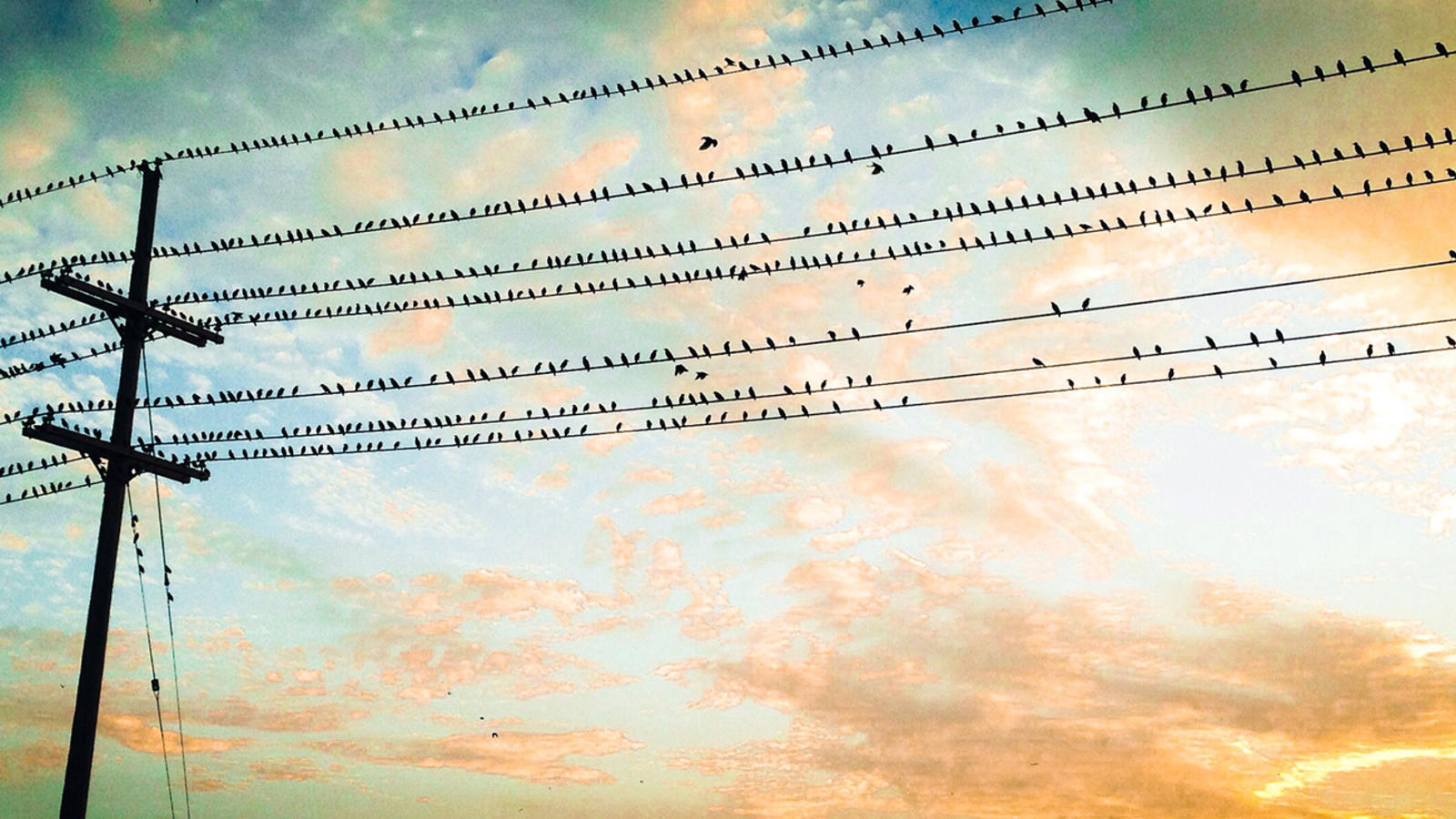
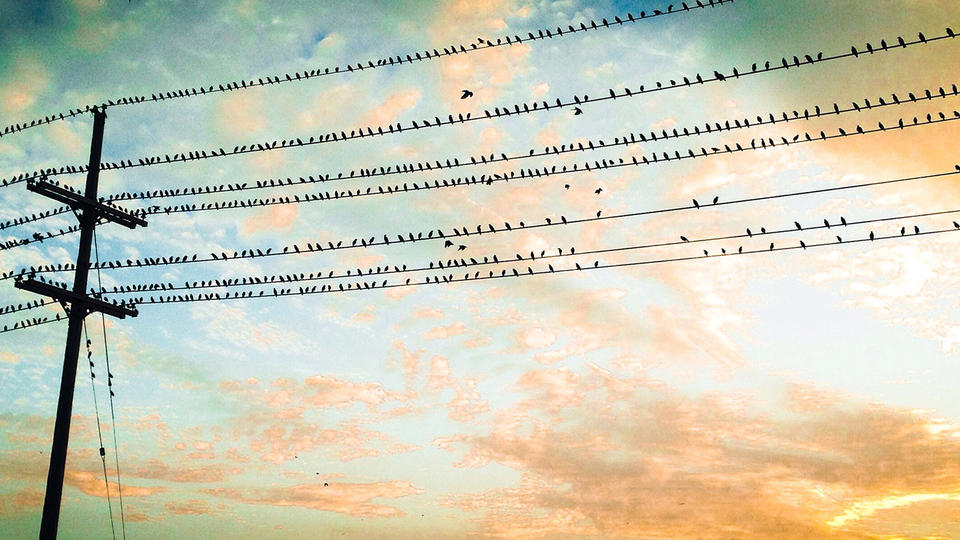
Based on research by Constance Elise Porter, Naveen Donthu, William H. MacElroy and Donna Wydra
How To Help Online Communities Love Your Company
- Successful customer communities don’t coalesce by themselves. They’re well-managed corporate initiatives.
- Online customer communities generate more than endorphins for the customers. They build financial value for the company.
- Engaging customers is probably the single biggest hurdle for firm-sponsored virtual communities.
Love of cooking may bring them together, but it’s the corporation that keeps the relationship alive. Reader’s Digest, best known for pocket-sized magazines, also publishes allrecipes.com, the world’s largest online community of cooking enthusiasts. There’s a reason for the company’s effort: Sustaining online customer communities generates much more than endorphins for the customers. It builds financial value for the company.
In a 2011 paper, Rice Business Professor Constance Elise Porter, Georgia State University marketing professor Naveen Donthu, Information Resources Inc. principal Donna Wydra and Socratic Technologies chairman William H. MacElroy outlined how companies can best nurture such communities. To reach their findings, the team interviewed more than 650 members of 60 different online communities sponsored by companies. Successful customer communities don’t coalesce by themselves, the researchers found. Instead, the seemingly spontaneous chat-fests are well-managed corporate initiatives.
But keeping the communities going isn’t easy. Engaging customers is probably the single greatest hurdle for firm-sponsored virtual communities. In fact, of the many Fortune 1000 companies that sponsor virtual communities, more than half might actually be destroying value rather than building it.
Companies with strong online communities talk a lot about “flow.” What they mean is that they want members first to enjoy themselves and identify with the product. From there, the consumers may take online leadership positions, offering constructive product critiques, writing content for the company’s site, even helping to design new products.
But there’s a process to all of this. The first step is understanding the consumer’s motivations. To stay with an online community, customers need to sense an overlap between their identities and those of the other members. They have to want to share information and stories.
Next, interest needs to be gently promoted and kept alive — though never in a way that feels coerced. Initial enjoyment, it turns out, isn’t enough to fuel participation over the long haul. Computer maker Dell’s strategy is to make participation easy, giving quick access to recent blog posts and threads from discussion forums. In one area of its community called “Be Heard,” members are invited to rate new products.
Personal connection, the researchers also found, eclipses incentives such as payouts for participation. From a company’s perspective, it’s welcome news: Brand love and community links can save vast sums in trying to gather customer feedback. Oddly, cash incentives are one of the least effective ways to lure participation in virtual research communities.
Once a firm has reached a reasonable level of customer participation, it needs to ensure that members are provided value, Porter’s team says. At this stage, members participate for the fun of it; the thought of having to leave gives them negative feelings. Once customers reach this point, the researchers say, they’re in a position to also satisfy specific needs of the firm. Giving happy clients a sense of status at this point can make them into a virtual workforce.
The Jones Soda Company, for example, gives its online community a role in the marketing process. A group of about eight teenagers forms part of an advisory board to the board of directors.
Starbucks takes a slightly more personal approach, encouraging employees to introduce themselves through extensive personal profiles, and inviting customers to share thoughts about products. During the first year of this project, customers submitted more than 70,000 ideas. The company put 94 into action and launched 25 as discrete products.
Both companies shrewdly tapped into the goodwill of a customer community that feels valued. But woe to the executive who takes the opposite approach, deeming the customers’ role as simply buying and chatting among themselves. In short order, the researchers say, such members can start feeling ignored. At this point, they may morph from advocates into “madvocates” who see themselves as attack dogs against both the product and its management.
Handled well, strong online communities give firms enormous financial benefits at an often negligible cost. Members who create content can save the company a fortune in advertising. Customers who dream up new products are providing expert consulting for free.
If the site is carefully nurtured, even those clients who don’t write, critique or invent new products still gather to chat passionately about the product. Businesses can’t buy that kind of word-of-mouth. But, Porter and her team conclude, they can certainly help it along.
Constance Elise Porter is an assistant clinical professor of marketing at Jones Graduate School of Business at Rice University.
To learn more, please see: Porter, C. E., Donthu, N., MacElroy, W. H., & Wydra, D. (2011). How to Foster and Sustain Engagement in Virtual Communities. California Management Review, 53(4), 80-110.
Never Miss A Story













